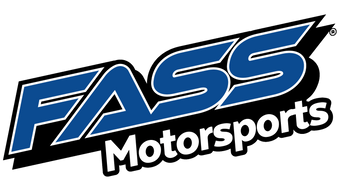The 2010–2018 Ram 2500 & 3500 trucks; also known as the 4th Gen Cummins — came with several transmission options, each with its own strengths, weaknesses, and enthusiast following.
Whether you daily drive, tow, race, or a combination of all, choosing the right transmission (or understanding what you already have) is key to a reliable setup.
Here’s a breakdown of the most common transmission options found in 4th Gen Cummins trucks — plus the increasingly popular 48RE swap that’s become a go-to for high-horsepower builds.

68RFE: The Most Common Automatic
The 68RFE is by far the most common transmission found behind the 6.7L Cummins in 2010–2018 Ram 2500 and many 3500 models. It’s a 6-speed automatic designed by Chrysler specifically for the Cummins platform.
Pros:
- Good drivability for daily use and towing
- Widely supported by the aftermarket (tuning, valve body mods, billet shafts, etc.)
- Relatively smooth shifting when tuned properly
- Works well for moderate-high power levels (450–1,000 HP) with upgrades
Cons:
- Weak in stock form — especially under heavy power or towing abuse
- Prone to clutch pack and valve body failures when tuned aggressively without supporting mods
- Expensive to build or buy— a 1,000+hp rated 68RFE can run $15,000+
For most street-driven trucks and moderate towing applications, a built 68RFE with proper tuning can be a solid option. But for serious performance, many owners look elsewhere.

Aisin AS69RC: The Heavy-Duty Option
The Aisin AS69RC was available in 3500 models and high-output Cummins trucks. Designed as a commercial-grade transmission, the Aisin was intended to handle heavier loads and higher torque numbers right out of the box.
Pros:
- Stronger clutch packs and geartrain than the 68RFE
- Better suited for heavy towing applications in stock form
- Factory paired with high-output Cummins engines
Cons:
- Limited aftermarket tuning and upgrade options compared to the 68RFE
- Shifting characteristics can feel firm or “clunky” unloaded
- Transmission tuning options are more limited — few tuners support it extensively
The Aisin can be a great option for towing-focused builds, but it’s not the top pick for high-performance enthusiasts who want extensive tuning control or racing-level horsepower handling.

G56: The Last Manual Transmission
From 2010–2018, Ram offered the G56 6-speed manual transmission in some 2500/3500 configurations — making these trucks the last of the manual Cummins diesels from the factory. The G56 is beloved by purists but requires some understanding.
Pros:
- Full driver control — no electronics, no tuning required
- Simplicity and nostalgic driving experience
- Surprisingly capable when paired with a good clutch
- No transmission tuning headaches
Cons:
- Stock clutches are weak — aftermarket clutch upgrades are almost always needed
- G56 cases can flex or crack under high torque if not reinforced
- Slower than their automatic counterparts in racing applications
G56 trucks are getting rarer and more sought-after. Many enthusiasts appreciate the connection and control it offers, but does have some drawbacks.

48RE Swaps: The Enthusiast’s Transmission
One of the most interesting options in the 4th Gen world is the 48RE swap. Originally used behind the 5.9L Cummins in 2003–2007 trucks, the 48RE is a 4-speed automatic known for its simplicity and strength when built correctly.
Many 2010–2018 owners swap a built 48RE into their trucks for serious horsepower builds.
Why 48-Swaps Are Popular:
- Build potential: A built 48RE can reliably handle 1,000+ HP with the right internals.
- Manual valve body options: Full manual control over shifting gives experienced drivers unmatched control for racing or sled pulling.
- Simplicity: Fewer electronics and proven hydraulic control make it more predictable than modern electronically controlled automatics.
Drawbacks:
- Fewer gears than modern transmissions — only 4 forward speeds
- Not ideal for daily driving unless you enjoy manual shifting (with manual valve bodies)
- Swaps may require standalone controllers and some fabrication
For race trucks, sled pullers, or serious power builds, a 48 swap is often the ultimate solution. It combines old-school strength with modern power — and when done right, it’s brutally effective.

Choosing the Right Transmission for Your Build
Ultimately, the right transmission for your 4th Gen Cummins depends on your priorities:
- Daily driving & moderate towing: A built 68RFE or stock Aisin can serve you well.
- Heavy towing & work truck: Aisin transmissions excel here, especially paired with proper cooling and maintenance.
- Driver engagement & simplicity: G56 manuals offer an old-school experience with modern capability.
- High horsepower & full control: A 48RE swap with a manual valve body is the go-to for serious power builds.
No matter which route you go, supporting mods — like proper tuning, upgraded fuel systems, and cooling — will make a big difference in performance and longevity.

FASS Motorsports: Your 4th Gen Cummins Experts
At FASS Motorsports in Washington, Missouri, we help 4th Gen Cummins owners plan their builds the right way. From fuel systems and suspension kits to turbo upgrades, we’ve got the parts and expertise you need.
👉 Shop 4th Gen Cummins parts online
👉 Visit our showroom in Franklin County, MO for expert advice & installation
Questions? We’re Here to Help.
- Phone: (636) 429-7020
- Email: info@fassmotorsports.com

